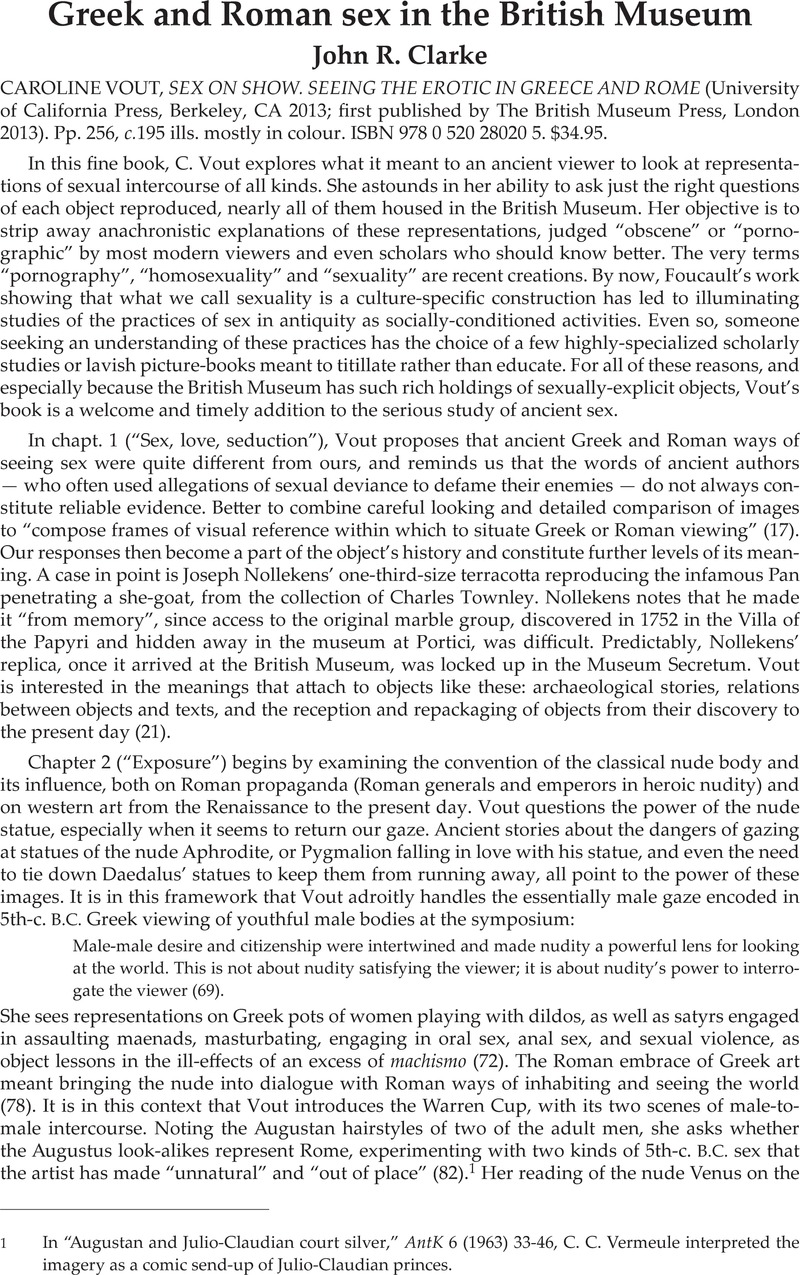No CrossRef data available.
Published online by Cambridge University Press: 27 November 2014

1 In “Augustan and Julio-Claudian court silver,” AntK 6 (1963) 33–46 Google Scholar, C. C. Vermeule interpreted the imagery as a comic send-up of Julio-Claudian princes.
2 In “Per una storia del gusto: riconsiderazioni sul Calice Warren,” BdA 146 (2008) 1–16 Google Scholar, M. T. Marabini Moevs proposes that a silversmith trained in the Stile Liberty (Art Nouveau) produced the cup in collusion with Fausto Benedetto and the Castellani Brothers, targeting Warren specifically. If it is a pastiche of Alexandrian and Arretine ceramics, Marabini’s argument fails to address the fact that the putative forger gave the boy on Side B a distinctive hairstyle (the “mullet”) not known to archaeologists at the time but surfacing in 1986 in an excavation at Osteppa (Spain): Pollini, J. J., “The Warren Cup: homoerotic love and symposial love in rhetoric,” ArtB 81 (1999) 21–52 Google Scholar. Thus this hairstyle would have been unknown to a forger working in c.1900 and would have alarmed a potential buyer expecting the lovers to have Julio-Claudian hairstyles: see Clarke, J. R., Roman sex (New York 2003) 84–86 Google Scholar.
3 The photographer evidently decided to bump up the light on the Warren Cup, which had the effect of erasing the fine details of hand-engraving; the photographs make its surfaces read as alternating globular highlights, and the figures look like Mussolini’s athletes in the Foro Italico (cover, 42-43, fig. 67, 187). In fig. 67, this lighting is so extreme that it turns the hair of the youth holding a strap into something resembling a stainless steel wrestling-helmet, and the face of the boy peering through a door into a skull.